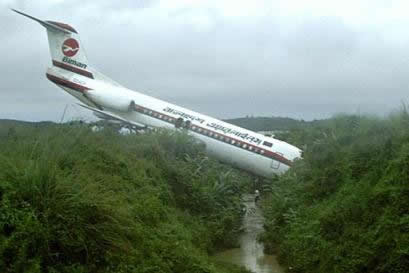Podcast: Play in new window | Download
Subscribe: RSS

You have a perfect plan. Then things begin to go south and before you know it, a day of reckoning. (Photo by motorkid.com/google images)
The next phase of the Crash of 2015 begins today. The first quarter of the year is now complete, and that means two things for the debt-logged companies trying to stay alive in the U.S. oil fracking patch: it’s time to report the value of their assets to the issuers of their lines of credit; and it’s time to repay or roll over a bunch of the debt with which they are logged.
That first one is the killer. These companies, virtually every one of which has had negative cash flow from the beginning of the so-called “oil revolution, have sustained themselves first with stock issues, then with junk-bond issues, then with subprime loans. As slack as the underwriting of those loans has been, they do actually require the existence of assets whose value at least approaches the amount of the loan.
You and I, to get a loan, have to pledge a house or a car or something else that actually exists and can be seized by the lender if default occurs. Oil companies’ assets, on the other hand, consist mostly of oil that they say is in the ground they own or lease, that they say they can get at any day, and that will be worth money — if it is, and if they do.
You and I would not have the gall to take a deal like that to our banker, but it sure has worked for the frackers. As business analyst and blogger Wolf Richter put it, “loans to over-indebted, junk-rated companies soared from about $40 billion in 2009 to $210 billion in 2014 before it came to a screeching halt.”
Lenders typically review the status of their outstanding lines of credit after the first and third quarters. The last time they looked at the frackers, the oil the companies claimed to own was valued at $99 a barrel. Today, it’s going to be more like $50 (they don’t use the current market price, but a moving average).
If you owned a $200,000 house, with a $150,000 mortgage, and had income, you’d be good to go. Then you lose your job, somebody builds a pig factory next to your house and it now appraises at $100,000. The bank wants $50,000 in cash, now. Ouch. Only a fracker could appreciate your pain.
This agony is going to roll out over the next two weeks ago as financial statements are finalized and released. But already, Bloomberg News counts 10 companies circling the drain, gasping for cash. One of the bigger fish, Sabine Oil and Gas of Houston, has maxed out its credit line, says it is about to default on some $2 billion of its debt, and has “substantial doubt” about its continued existence.
In today’s enchanted world of high finance, normally banks don’t care whether loans are repaid or not, because before the ink is dry on the closing statement the loan is whisked out the back door to become part of a collateralized debt obligation, or some other Frankenstein security, the bankers get the money back that they just lent out, they pocket substantial fees, and do the next deal. But the collapse of oil prices was so sudden, and so completely not foreseen, that a lot of the smartest guys in the room got caught with hot paper still in their hip pockets. According to the Wall Street Journal (reposted here), “Citigroup Inc.,Goldman Sachs Group Inc.,UBS AG and other large banks face tens of millions of dollars in losses on loans they made to energy companies last year.”
In addition to the junk loans, coming to a head now, there are the junk bonds, which have been rotting fast since last fall. And if you still don’t see here the same deadly portents that preceded the crash of 2009, consider one more: Deutsche Bank has said publicly it foresees a 15% forfeiture rate of oil patch HY (high yield, i.e. junk) bonds. “A shock of that magnitude,” says Deutsche Bank, “could be sufficient to trigger a broader HY market default cycle. “
This is not an April Fools story. It is a story about some fools in April, facing a day of reckoning.
Malthus was right!
http://ponziworld.blogspot.co.uk/2015/04/mad-men.html
Malthus only?
There were also the Club of Rome, Paul and Anne Ehrlich, Edward Goldsmith, David Suzuki, former US president Jimmy Carter, and several others. They all warned of what the excesses of modern industrial ‘civilization’ would lead to, and they all did so during the 1970s and 1980s, when there was still time to change course.
As it turned out, all the people they talked to who could have made a difference refused to listen and to see the truth. They all had (thick wads of) shit pasted over their eyes and ears.
The consequence is that we’re all now headed for a giant shithole.
Holy shit.
This,I believe will also also get papered over.
Craig – the real world doesn’t run on paper though.
We need oil, grains, fisheries, forests, etc. etc.
We are, in fact, approaching peak everything – except peak human population.
Or perhaps the Seneca Cliff for us humans approaches too!
Time to pay the piper – er, a, paper – that we owe.
“Waddiya mean ya won’t accept ma credit? Geez, look it worked every other time, why not now?!”
Use it and you kill the very system that supports your existence, don’t and go back to the Stone Age. What a predicament!
Jim Cramer again — “don’t worry, be happy”:
http://www.msn.com/en-us/money/markets/oil-glut-jim-cramer-says-oil-is-doing-better-than-you-think/ar-AAakSmB